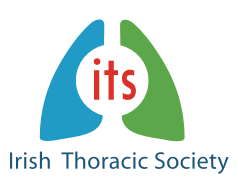What is obstructive sleep apnoea?
“Apnoea” means temporary cessation of breathing due to upper airway collapsibility during sleep. In obstructive sleep apnoea (OSA), frequent pauses of breathing occur during sleep due to partial collapsibility (hypopnoea), or complete collapsibility (apnoea) of the upper air passage in the hypopharynx. A combined apnoea hypopnoea index (AHI) is used to grade the level of severity of OSA, i.e. mild (AHI 5-15/ hr), moderate (AHI 16-30/ hr), or severe (AHI > 30/ hr). OSA is diagnosed by overnight sleep monitoring in hospital (polysomnography), or at home (polygraphy). Heavy snoring and excessive daytime sleepiness are common symptoms of OSAS.
Daytime symptoms and signs of OSA
Excessive sleepiness (measured on an Epworth Sleepiness Scale)
Impaired performance at work
Impaired concentration while driving
Morning headache
Intellectual deterioration, and impaired memory
Depressive symptoms
Night-time symptoms and signs of OSA (usually witnessed by bedpartner)
Snoring, witnessed apnoeas & arousals from sleep
Restless sleep, & Nocturnal choking
Sweating
Reduced libido/impotence
What causes sleep apnoea?
Obesity, increasing neck collar circumference (> 17 inch), the natural shape and size of the pharynx, nasal obstruction, tonsillar enlargement, alcohol and hypnotic drugs may all contribute to OSAS. Genetic factors influencing the shape of the facial bones (retrognathia) may also be linked to OSAS. As OSAS is related to obesity, measures aimed at reducing excess weight may help to prevent it.
Treatment of sleep apnoea
CPAP
The best treatment for moderate to severe OSAS is continuous positive airway pressure (CPAP). For CPAP therapy, a machine supplies a positive pressure of air via a mask which fits over the nose or mouth (or both) and the air pressure keeps the upper airway open during the night.
Oral appliances (Mandibular Advancement Devices)
Oral appliances, inserted at night, aim to move or advance the mandible forward, preventing upper airway collapsibility at night.
These devices are an alternative to CPAP, in those with mild to moderate OSA, and in those who can’t or won’t wear CPAP therapy. They can also be used as an adjunct to CPAP therapy.
Positional devices
As OSA is usually worse in the supine sleeping position, positional devices (Zzoma Positional Device or Slumberbump) keeps patients comfortably positioned on their side and prevents them from going on their back during the night, for those with predominant supine related OSA.
Useful links:
www.isat.ie
www.irishsleepsociety.ie
